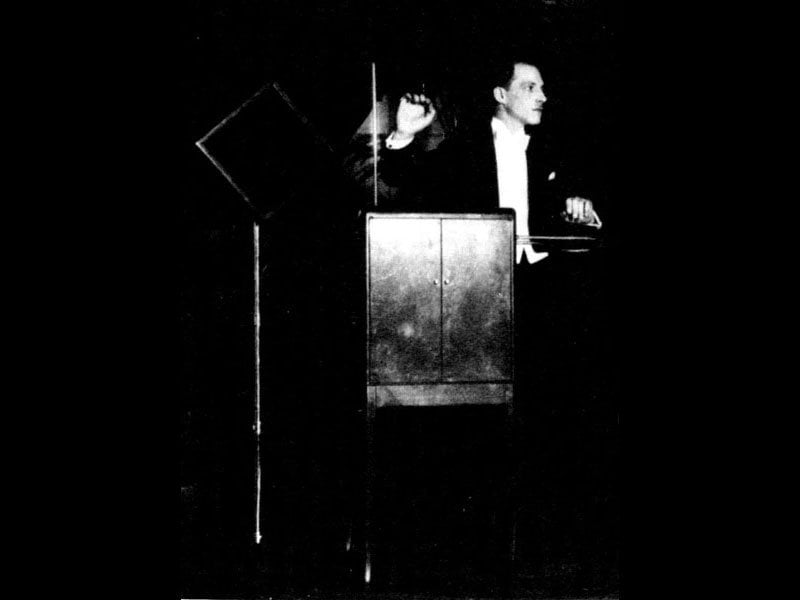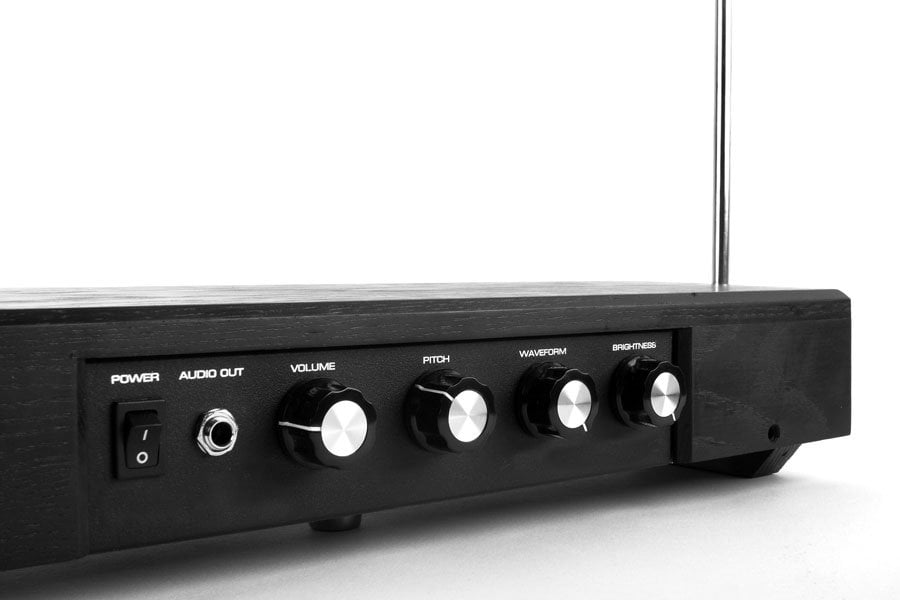Every once in a while, a musical instrument is developed that has a sound that defines an entire era. In 1928, an inventor named Leon Theremin patented a device that would be one of the few musical instruments that is played without the musician ever having to touch it. The device was originally called the etherphone, after the method it used to convey sound through the disruption of electronic current. But it was eventually just called the theremin, after its inventor. The eerie sounds it creates have come to mark an era in film and music that is impossible to forget or mistake. The average music fan may not know many theremin virtuosos, but just about everyone has heard the wailing sounds of this unique musical instrument.
THE HISTORY OF THE THEREMIN
At the beginning of the 1900s, the Russian government started to get into the development of sensors that detect movement using an electromagnetic field. The idea is that a sensor could detect an object’s exact location by finding breaks in the field. The final device that was invented from this idea was a musical device created in October of 1920 by a young physicist name Leon Theremin. The outbreak of the Russian Civil War convinced Theremin to take his device on a tour of Europe. Word about this unique instrument started to circulate, and Theremin was selling out performances all over the continent. In 1929, Theremin moved to the United States and patented his instrument.
The first company that Theremin sold reproduction rights to was RCA, which eventually led to the introduction of the Thereminvox later that year. The Great Depression stifled sales a bit, but it became an American hit in the mid-1930s. In 1938, Theremin himself was captured by the Soviet Union and forced to work in a prison camp for 31 years. Theremin did not return to the United States until 1983, when it was revealed that he had originally left Russia in the 1920s to escape personal debt that was well beyond what he could afford to pay. Theremin passed away in 1993.

CONCERT AND POPULAR MUSIC
There is an entire genre of music written only for the theremin. Some of the more prominent theremin composers include Percy Grainger, Christian Wolff, and Jorge Antunes. Grainger was unique in that he would write parts for multiple theremins into his full concert pieces that would replace a string section. Lydia Kavina is a Russian musician and student who studied the instrument under Leon Theremin. She carries on his playing technique in concerts all over the world.
Rock music has also embraced the theremin and has used it in several iconic pieces. The rock band Led Zeppelin was famous for incorporating a theremin into its live performance of the song “Dazed and Confused.” It was rumored that the Beach Boys used a theremin on several of their songs, but the instrument the Beach Boys used was actually called a Tannerin.
FILM AND TV
Horror movies of the 1940s were the first to start to use the theremin regularly. That haunting sound, which has been used to signify the sound a ghost would make, has been used on many low-budget horror movies. Television shows of the 1950s and 1960s that featured horror movies would use the theremin as part of the introduction music. The most famous use of the theremin in television was as the main instrument in the theme to the 1960s television series “Star Trek.”
Perhaps the most famous use of the theremin in film was its use in the Timothy Burton movie Ed Wood. It is a film made to memorialize the career of notoriously bad Hollywood director Edward D. Wood Jr., and Wood’s movies were often associated with theremin music
OTHER USES
There is a fun side to the theremin that has been connected to video games and even books. Poet Andrew Joron is famous for including references to theremins in his work, and he is also known for playing the theremin as he reads his works to live audiences. The 2005 video game “Destroy All Humans” used a theremin to create several of the alien sound effects that made the game so popular. And the game “Soul of the Ultimate Nation” features a theremin solo by Lydia Kavina.
OPERATING THE THEREMIN
Even though the theremin requires no physical contact to be played, it can take years to perfect a theremin performance. The instrument has two antennae, and the performer manipulates their signals by moving their hands. One antenna is for volume, and other controls pitch. The volume and pitch change depending on where the performer puts their hands. Some inexpensive versions have an antenna for pitch and a standard knob for volume control. The initial design of the theremin used a complicated array of capacitors that would alter the sound based on how the performer’s hand disturbed the electromagnetic field. But more modern designs have simplified the method the theremin uses to create sound without changing the actual sound itself.
Because the theremin is based on altering a persistent current, the performer must always consider the theremin to be “on” during a performance. For example, a musician only needs to muffle the strings of an electric guitar to stop the guitar from making sounds, but with the theremin, the volume control is always active and the performer must always be aware of when to turn the volume down and when to allow the volume to rise.

RESOURCES
- MIT Profile on Leon Theremin
- Leon Theremin: The Man, The Music, The Machine from the BBC
- An Audio Biography of Leon Theremin from The Engines of our Ingenuity
- Theremin World – A Complete Online Theremin Resource
- Popular Science: How to Make a Theremin
- The Theremin: A Strange Instrument with a Strange History from CBS News
- History of the Theremin from Moog
- Lydia Kavina’s Official Website
- The Theremin’s TV History at TV Tropes
- The Theremin on the IEEE Global History Network
- From Hollywood Horror Movies to Lincoln Center
- Tonal Ambition – A Unique Look at the Theremin from Columbia University
- Sinister Sonorities: The New Sound of Horror Cinema in the 1970s
- Instruments of Horror – The Theremin and Other Strange Sound Effect Instruments
Home Theater Seating
- Best Small Recliner
- Home Theater Leather
- Home Theatre Seating
- Leather Movie Chair
- Leather Theater Chairs
- Best Leather Recliner
- Berkline Furniture
- Recliners for Sale Cheap
- Narrow Couches
- Palliser Theatre Seating
- Satisfaction Surveys
- Home Theater Seating With Loveseat
- Movie Room Sectionals Ideas
- Microfiber Recliners
- Movie Theater Couches For Sale
- 2 Seater Settees
Decor & Accessories
- Home Theater Design
- Home Theatre Shop
- Black Tray Table
- Low Seating
- Octane Diesel XS950 Collection
- Movie Reel Clock
- Full Grain Leather Sofa
- Home Stereos Systems
- Movie Room Carpet
- Media Room Sizes
- Theatre Wall Lights
- Turbo Brown Leather Power Recliner
- Black Leather Sectional With Lights
- Azure Lhr Series
- Media Tables Furniture
Top Pages
- Movie Theatre Seats
- Home Theater Rooms
- Home Theater Seats Cheap
- Modern Recliners
- DIY Home Theater
- Recliner Table
- Wall Hugger Theater Seating
- American Made Leather Couch
- Lane Leather Recliners
- Red Recliner Chair
- Commercial Theater Seating
- Faux Leather Home Theater Seat
- Good Leather Sectionals
- Home Theater Chairs Reviews
- High Back Recliners For Sale

